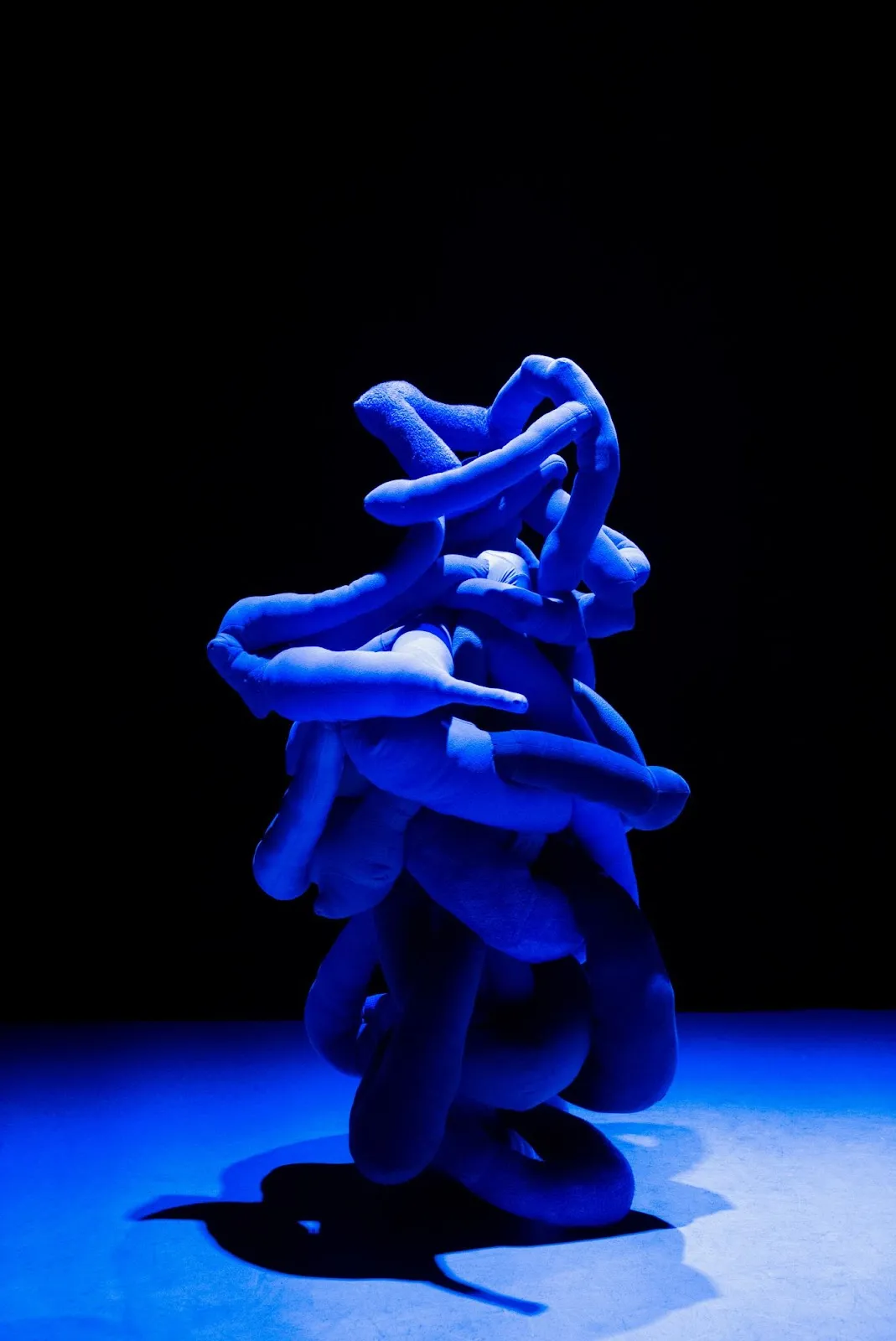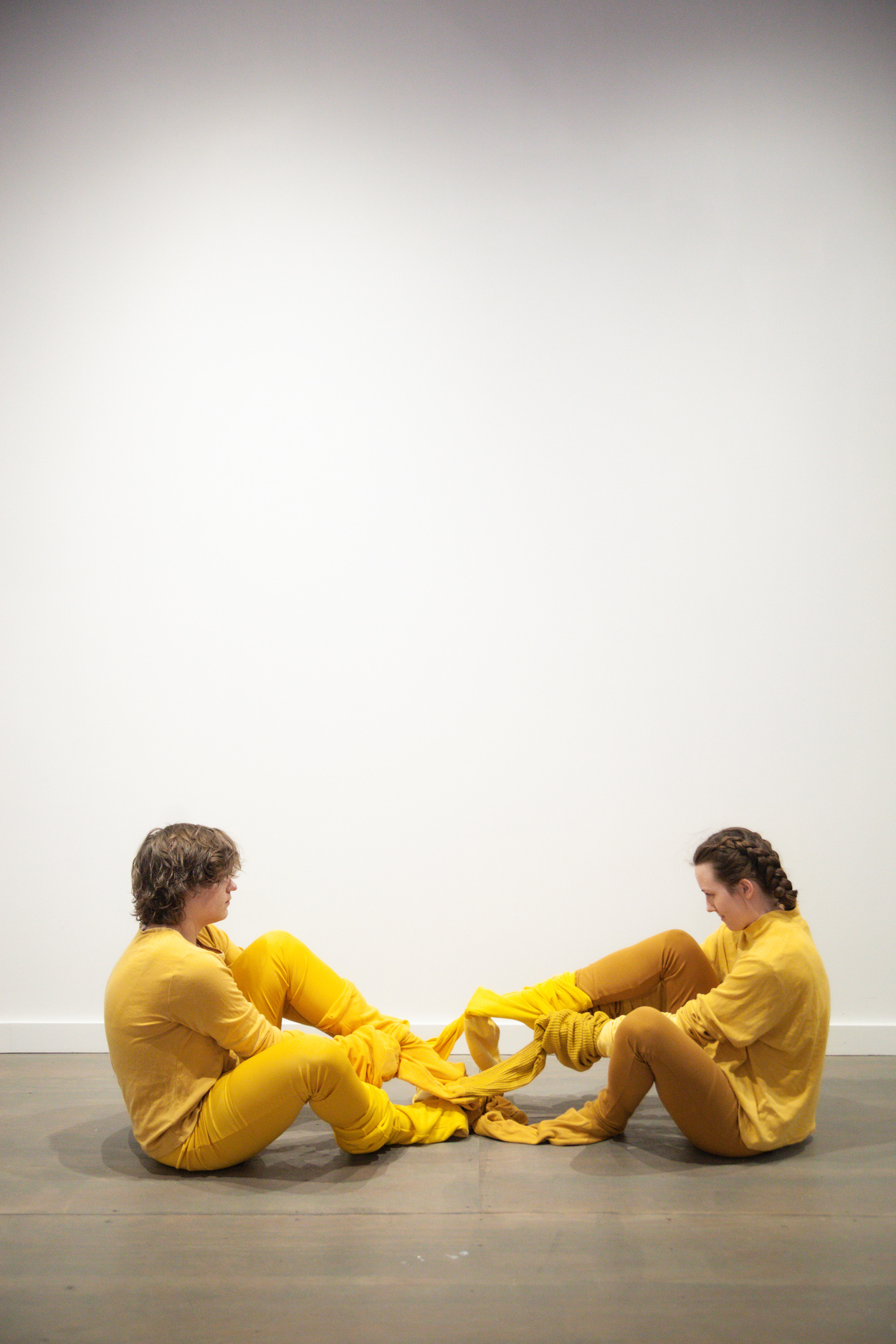Palinopsia from April 23 to May 17, 2024, at The Stamp Gallery | University of Maryland, College Park | Written by Rachel Schmid-James
“The past often repeats itself” is a popular saying in the modern world, but there is much more truth in it than just surface level. When I am performing a task such as cooking or riding the train, I am hit with memories of holding my grandfather’s hand while boarding the MARC or getting flour all over myself while helping my grandmother make red beans and rice. In the Stamp Gallery’s latest exhibition Palinopsia, artist Margaret Walker breathes life into this feeling, showing that the past cannot always be clearly distinguished from the present.
Each artist in this show brought their unique interpretation of the idea of “palinopsia” to this exhibit, each exploring a different aspect of the term. A medical condition, palinopsia causes images to be repeated in a person’s field of vision after the stimuli have been removed. The word itself comes from the combining of the Greek words palin (again) and opsia (seeing), which Walker engages with through exploring the ties between generations. She portrays images of her family members and herself over and over again to encourage the audience to engage with the themes, just as the word palinopsia suggests.
The first thing the viewer sees when they turn to the left of the gallery is a transparent piece of silk printed with images of a woman covering a series of small, square mirrors. The woman, Walker herself, stands at different angles, her image repeating over and over again side by side, the mirror reflecting not only Walker but the viewer as well. The work, titled dressing, not only uses the body to explore palinopsia but also involves the viewer in the experience. It seems to ask the viewer to reflect on the ways their body and memory interact, as Walker writes in her artist statement that her work “explores the memory of her body as a tool to connect family histories.”
Margaret Walker, dressing (2024), photographic prints on silk, mirrors.
Composed of four hanging photographic prints on silk, her piece living explores generations and family ties, and the repetition of images in the same way people with the condition palinopsia, experience life. Each of the prints depicts Walker, her mother, or her grandmother doing textile work. When looking straight at the prints, which have been hung with space between them, the images of all three women blend, appearing as one person even though the photos were taken years apart. The sheerness of the silk makes each layer appear to float and shift slightly in the breeze, reminiscent of the fleeting nature of memory. The fluidity of the work combined with Walker’s storytelling creates a beautiful testament to the generations that came before each of us.
Margaret Walker, living (2024), photographic prints on silk.
Both of these pieces present something likely familiar to the audience. In some way or another, every person is inherently connected to the past, especially as it relates to their own family and friends. Even the family or ancestors we never met are still important, for they continue to be seen in the features on our faces or the stories we are told by those who came before us. Just last night I was sitting with my grandmother and my new puppy Zipper when the conversation switched to my late grandfather’s old dog. Although in the moment it was just fun to share the memories and stories we recalled, I realize now when thinking of Walker’s work that it is so much more than that. Someday my grandmother will pass away and it will be up to me to carry on the stories and descriptions I have of her. My children and grandchildren may not know her personally, but just like in Walker’s work I hope they can draw the parallels when looking at photos of me alongside her and consider the fleeting nature of time and generations, but also the deep impact of memory and experience. I hope viewers can see in their own lives the ways palinopsia, or “again seeing,” is present, within their families or otherwise.
Walker’s work is included in Palinopsia at The Stamp Gallery of the University of Maryland, College Park, from April 23 to May 17, 2024.











